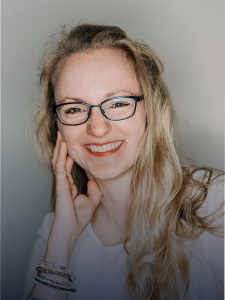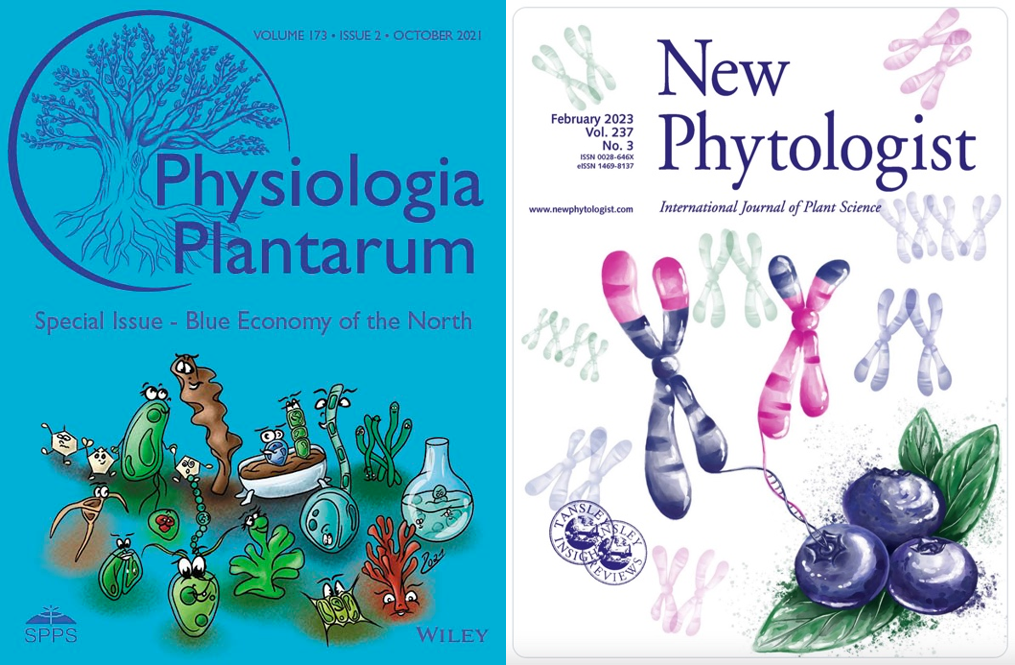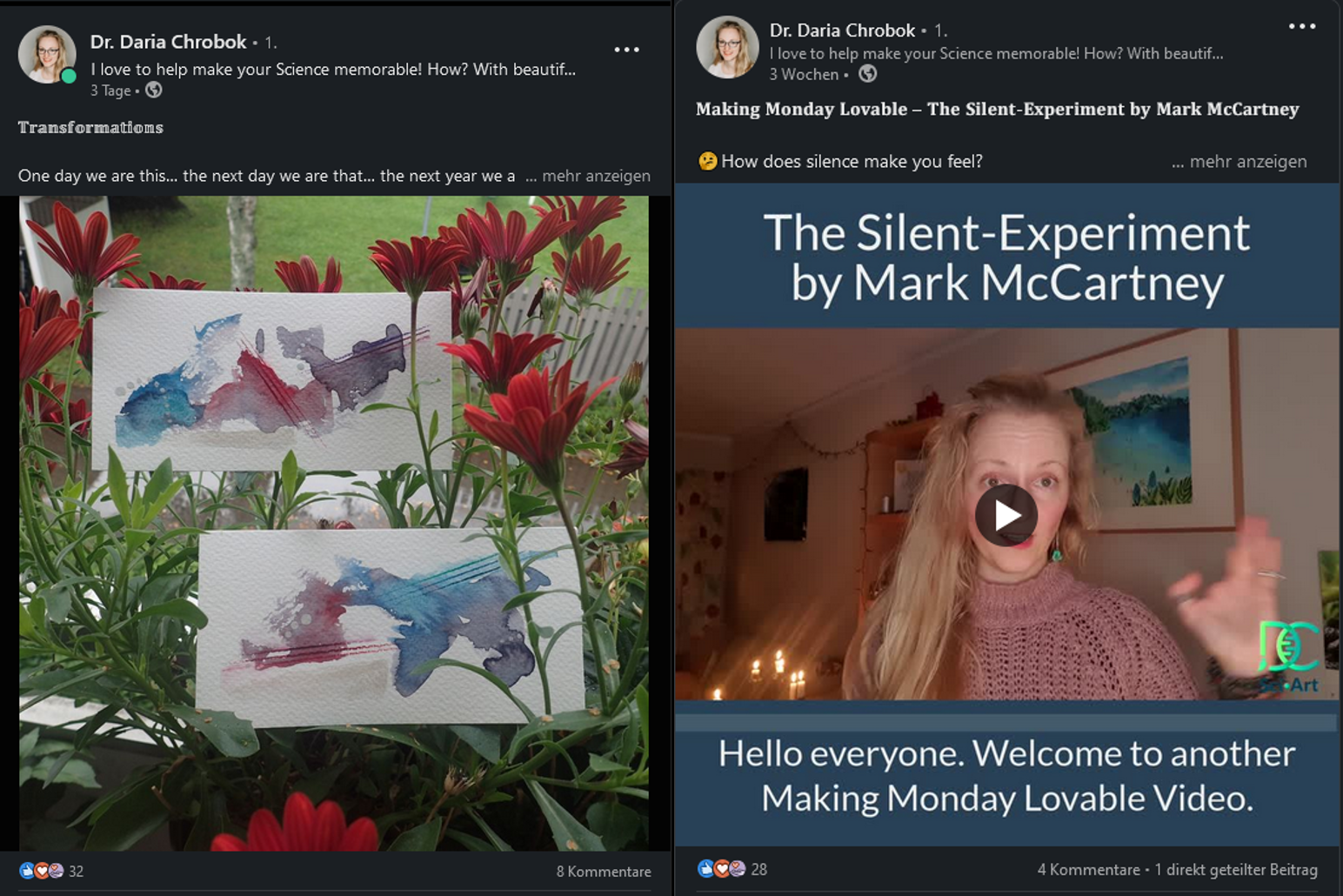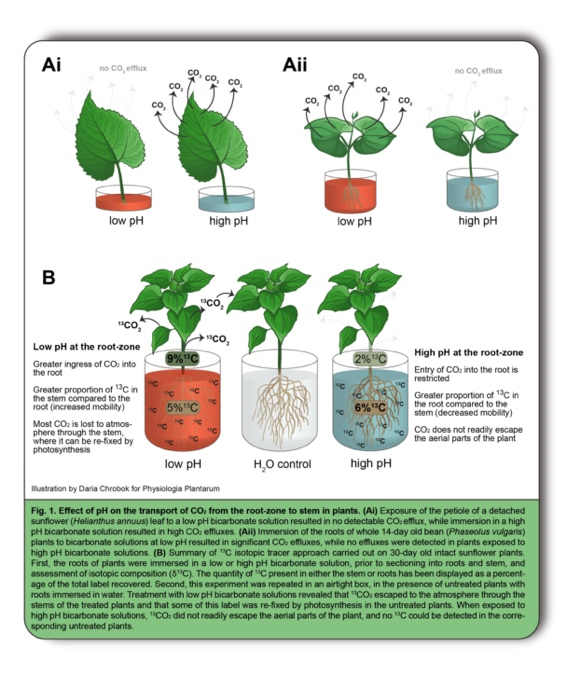
Daria Chrobok tells us everything there is to know about being a scientific illustrator.
Go through your biology book. Or take a look at a few scientific publications. What do you notice? The text is often accompanied by illustrations. They help to visualise processes and make them easier to understand. This is exactly what scientific illustrators do. They work at the interface between art and science. After all, the images should not only look pretty, but also be scientifically correct. And that’s not so easy, so much so that there are even specialised university studies offered for this.
We interviewed Daria Chrobok, who opened her own company DCSciArt after finishing her PhD, about her profession as a scientific illustrator. We hope you enjoy the read!
Hello Daria, please introduce yourself. Who are you, what is your background and what are you currently passionate about?
Hello everyone, my name is Daria Chrobok. I obtained my Bachelor’s degree in Biology at the University of Cologne and my Master’s at the University of Düsseldorf. After my Master’s, I worked in the United States for six months and gained experience abroad in another laboratory. I then did my PhD in Sweden, where I still live today. During my doctorate, I realised that the academic career path was not for me. However, I was able to utilise my passion for art during this time and started drawing scientific illustrations for myself and my colleagues. That’s how I ended up starting my own business as a scientific illustrator after my PhD.
Currently I’m very passionate about abstract art. I also have a dog and am a total nature lover, which is a great combination as a scientific illustrator!
You are a scientific illustrator. What exactly does that mean?
A scientific illustrator is someone, who illustrates all kinds of scientific concepts. This can be something incredible abstract, e.g. protein complexes assembling in a membrane. It could also be metabolic reactions, pathways or illustrations of organisms, like anatomical drawings. So basically everything that is a scientific concept is included.
As scientists are trained as scientists, but most of the time don’t have the illustrative skills, we come into play. Because for publications, funding applications and presentations the concepts have to be explained, and visualizing them can help tremendously, as they are more efficient than pages of text and can also save a lot of space, as there are often strict limitations.
You’re self-employed, right? Why did you decide this way? Is that common in your profession?
Exactly. I decided to do it because I never really thought about having a permanent position after my PhD. I lacked a lot of freedom in science to decide for myself how and what I do, why, when and where. This quickly made it clear to me that I would set up my own company and become self-employed. I also wanted to be able to decide for myself where I wanted to live, independently of a potential employer, and didn’t want anyone to tell me what I had to do. Of course, my clients now also decide what I illustrate, but I can choose the clients that suit me and my drawing style. And as I’m a big fan of plants and have a PhD in plant physiology, most of the illustrations I do are plant-orientated anyway, so the clients who find me are already a bit pre-selected.
At the same time, there aren’t really many scientific illustrators. There are courses and degree programmes here and there, but it’s not a given that you study it. As a result, there aren’t that many permanent positions that you can apply for.
If someone doesn’t want to be self-employed, can they still become a Scientific Illustrator? Where do scientific illustrators work as employees?
Sure. You can work in museums or institutes for example. There are also a few jobs at scientific journals, but not that often. There are also larger studios that offer scientific illustration, that would also be a place to start. But overall, it’s not that easy to find such jobs.
Who are your customers? What kind of orders do you receive?
My clients are generally people who have something to do with science. Most of them are scientists at universities, professors, group leaders. Then there are also biotech companies that want to present how their product works. My clients also include scientific journals, especially for covers and other illustrations for editorials. The commissions can be for all sorts of things. For publications, covers, presentations, posters, websites, marketing material, books or social media. And much more besides. Depending on what the illustrations are used for, they can range from super scientific to light-hearted and humorous.

Covers created by Daria for different scientific journals ©Daria Chrobok, DC SciArt
How can we imagine your typical working day? For example, what does your workplace look like and how does the process from order placement to completion work?
Basically, I don’t have a typical working day. It partly depends on how my energy is at the moment, what I feel like doing, and I try to organise my day accordingly. I have this freedom as a self-employed person. But there are also fixed appointments, like with my accountant for bookkeeping. I also stick to deadlines, which I strictly adhere to. Then I sometimes work longer than just until five. Being self-employed, I am of course not only responsible for illustrations, but also have to take care of everything business-related. That includes finances and marketing. I’m very active on LinkedIn, for example, and post there regularly; I write all my posts myself. I also have an assistant who is responsible for email outreach, which takes some of the work off my hands.
As far as my workplace is concerned, I used to have an office space in a start-up incubator. However, I now work from my living room. I have a height-adjustable desk for my workplace so that I can work both standing up and sitting down. I use a Wacom tablet for illustrating, as well as an iPad.
As far as the basic process from order placement to completion is concerned, it looks like this:
As soon as someone contacts me, there is an initial meeting to discuss what is needed. The client brings their initial references and ideas of what they want. I ask a lot of questions during the meeting and then try to find out in as much detail as possible what the expectations are, whether there are branding guidelines and what deadlines exist. At the end, I give an estimate of the amount of work involved. For scientists, it’s based on hours; for companies, I charge a fixed price per project. And then we have to see if it works for both sides. As soon as I get the go-ahead, I can get started.
To start with, I get references from the customer, sometimes even a rough sketch that I can use as a basis. If a rough sketch is not already available, I create one myself and send it to the customer for feedback. There are usually 1-2 rounds of this until the sketch is approved. As soon as that has happened, I then sit down to work on the first version and illustrate it. I usually create a few different layouts and colour schemes so that the customer has something to choose from. The customer gives me feedback again and then I adjust a few details if necessary and finalise the illustration and send it to the customer. I issue the invoice at the end of the project; for larger projects, the customer pays half in advance.
What other tasks are part of your job?
What is also included is virtually everything you have to do when you have a company. For example, customer acquisition, I have to win customers. This includes everything from marketing and social media to sales. I also have to do the bookkeeping, ideally once a month, meet with my accountant every three months and then again at the end of the year. That takes about an hour a month. Social media also takes up a lot of time, but otherwise my main work is illustrating, sketching and meetings with clients.

Social Media is also part of Daria’s job. She is very active on LinkedIn and also posts artworks and informative videos, that are not in a direct relation to her profession.
What do you particularly enjoy about your job? What did you have to get used to at first?
What I particularly enjoy is the fact that I get science delivered to me. I learn so much from numerous experts all over the world. Combining this with my love of art and imparting knowledge is a fantastic feeling. I love the fact that I add value and that the illustrations help to impart knowledge.
In the beginning, I was really scared of the business side of things, taxes, accounting and so on. It helped me a lot to have an accountant right from the start. What I didn’t realise was how important self-development was. When you have your own company, it’s important that you grow beyond yourself, as it brings its own challenges. The success of the company is directly linked to me as a person.
I had to get used to social media, for example, as I was never the person for it, but it’s important for my job. It took me a really long time and a specific coaching for LinkedIn, which also included personal branding and social selling, helped me a lot. This also included presenting myself as a person and learning how to write about science in my own way. I now love interacting on LinkedIn and it’s super fun.
What I also had to adapt was my “money mindset”, i.e. how I see money. Of course, you need this especially as a self-employed person, as I set my own prices and everything that subconsciously inhibits me has an effect on my company. Coaching sessions have really helped me here too.
How did you get into your profession? Is a job as a scientific illustrator suitable for career starters?
At first, I had no idea that this profession even existed. Back then at school, I actually took advcanced courses in biology and art, but I thought I had to choose one. So I ended up studying biology. During my PhD, I realised how important illustrations are in this field and that you need them everywhere in science. As a result, I decided to combine art and science and do that.
I would say that the profession is suitable for career starters, which, strictly speaking, I was at the time, or perhaps more of a career changer. Of course, you should be able to draw and illustrate well and have a very good scientific understanding. If you have both the artistic skills and the scientific know-how, that’s a very good basis.
What are the overall working conditions of your job?
This fluctuates depending on how much I have to do and how many orders come in. However, I try not to work more than 8 hours a day, ideally only 6. As I’m self-employed, I have flexible working hours. I try to limit my work to Monday to Friday. If something comes up or just before a deadline, I sometimes work at the weekend, but then take the week off. The times during the day always depend on the weather, for example in summer I prefer to work in the morning and evening and do something at lunchtime, e.g. go out with my dog.
I work from home all the time and very rarely travel for my job. I only travel when I’m invited to seminars or talks by universities or similar organisations. Nowadays, however, a lot of things are done digitally, as this also saves customers travelling costs.
As a self-employed person, I don’t have any fixed holidays, I take them as and when I feel like it. I couldn’t even say how many days I take a year, but definitely enough to keep me happy.
The salary is variable and depends on the orders. I orientate myself according to how much I want to work, what fixed costs I have, what taxes I have to pay, and so on. Sweden is also a bit more expensive than Germany. As I set my own prices, I have to factor all that in, in combination with my skills and what I can offer. My income has increased over time, partly because my experience has increased my value. At the moment, my income averages around €5,000 a month, before tax. The monthly income fluctuates depending on the order situation, sometimes I have months with €10,000.
Info: Daria’s prices are listed on her website. At the time of the interview, Daria charges EUR 125 per hour for researchers. For companies, she charges around €2000-2500 per project. It should be noted that the cost of living in Sweden is higher than in Germany.
Are there typical career paths you can take as a scientific illustrator?
No, I don’t think there are any typical career paths. However, I can’t say that 100%, as I’m already “at the top” as a freelancer. In larger companies, you could probably become an art director and lead your own team. A change to other positions is certainly possible, as a scientific illustrator has a wide range of skills.

Another illustration from Daria, which shows the effect of the pH value on the CO2 transport in plants in a clear and understandable way. ©Daria Chrobok, DC SciArt
What else should people know? What tips would you give to anyone interested? What skills do you need for the job and how do you learn them?
If you have both the scientific and the artistic in you, then you already have a mega-specific niche, as many scientists have problems presenting their results visually in a sensible way. If that’s the case, then you already have a strong market value.
You also don’t need hundreds of certificates and skills for the job. Find your own style and get the right software for it, that’s enough. Nobody has ever asked me for certificates, my projects show the customer what I can do. As soon as you have the basic skills, it’s all about winning clients and gaining experience. Then it’s practice, practice, practice. You learn with every project, not just artistically, but also how to price your projects appropriately, estimate the time required, etc.
What can help at the beginning with self-employment is to start part-time to have some financial security. In the beginning, I also worked as a technical editor for a journal and built up my customer base on the side. Today, I still work with the journal, but as a freelancer rather than a full-time employee. Make sure you’re well informed about self-employment and the right type of business, as this will save you a lot of stress and money later on.
In addition to illustrating, soft skills are incredibly important for the profession. Communication, marketing and, as a self-employed person, finances. Your illustrations need to be visible, for example via your own website or social media. People need to be able to get to you. That’s where social selling comes in. If you get on well with your customers, they will be happy to recommend you to others.
I would also always recommend an accountant, it saves a lot of stress and potential worries and you can be sure that everything is correct.
If you are unsure about setting prices or posting on social media, I can recommend coaching. As I mentioned earlier, this has helped me immensely.
If you could give one piece of advice to your student self back then, what would it be?
Keep doing what you’re doing. Stressing and worrying doesn’t help much, as long as I really listen to myself and my inner voice and intuition, everything will be fine. It all worked out in the end and I found the right job for me.
That was our interview with Dr Daria Chrobok. If you would like to find out more about the profession of scientific illustrator, Daria has also published her own video series on the subject on YouTube. You can find it here. It’s well worth a look!